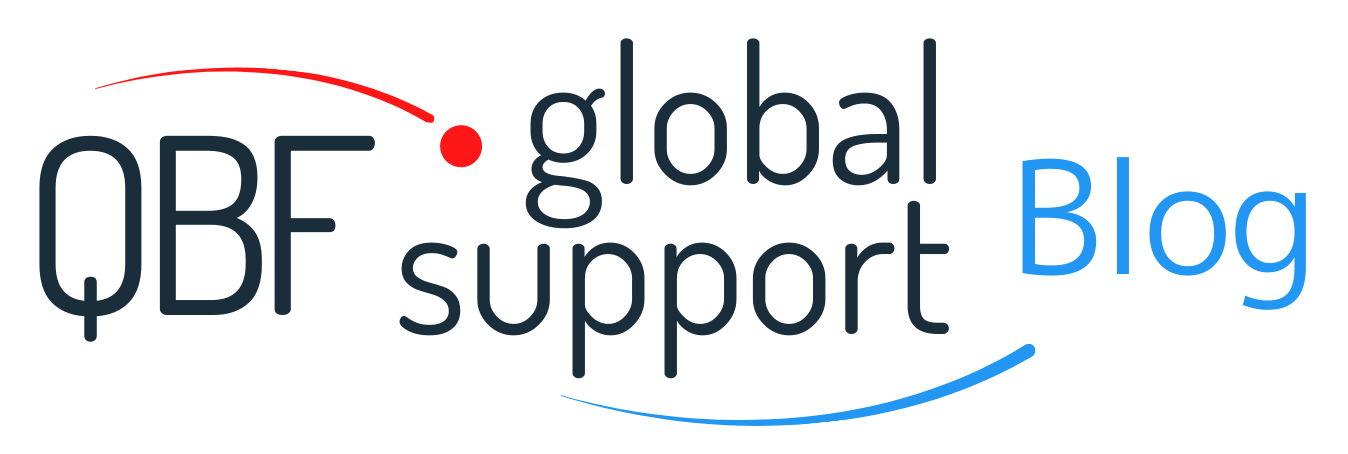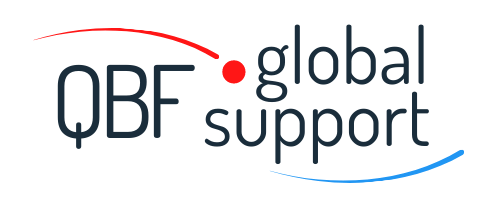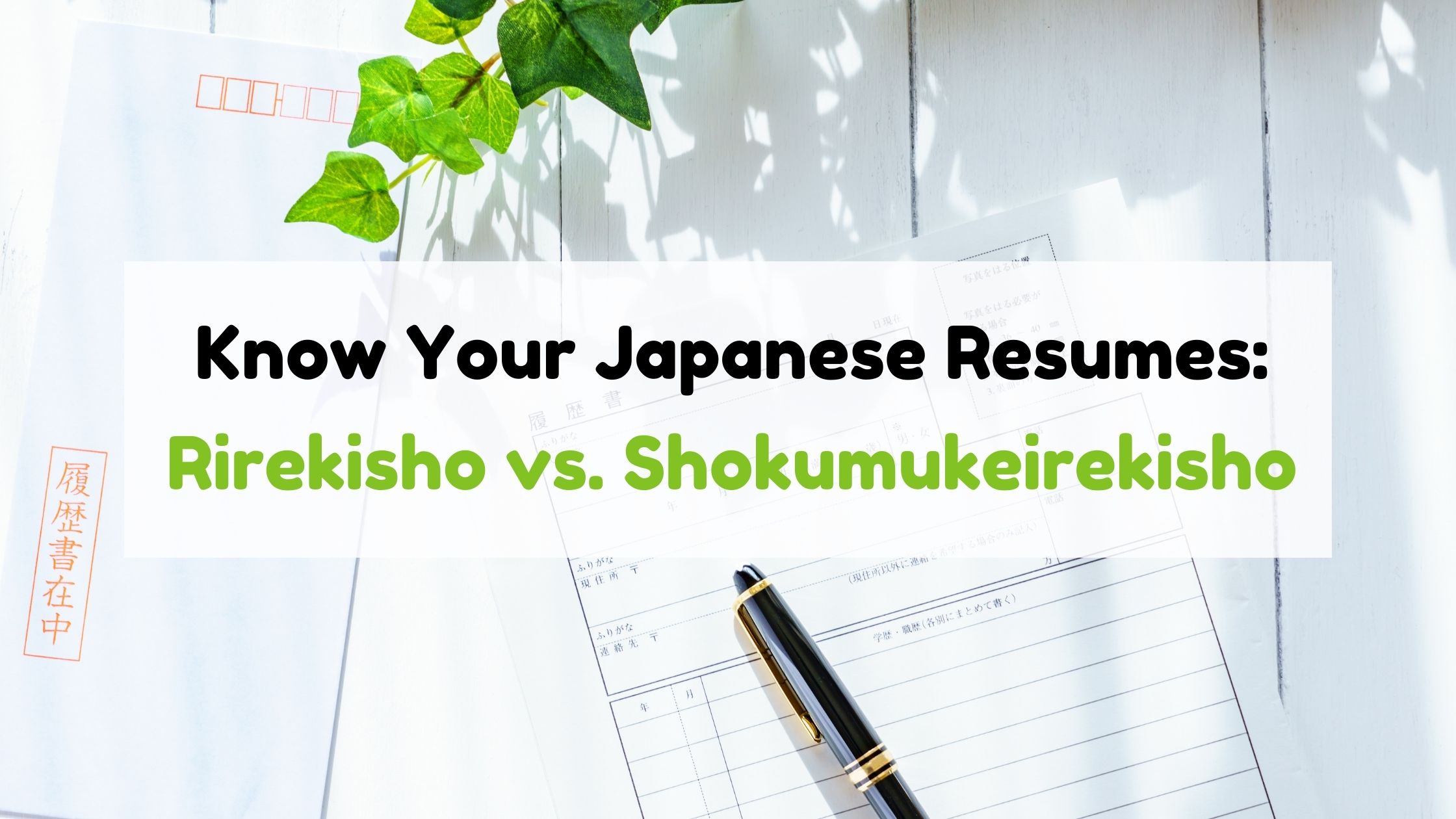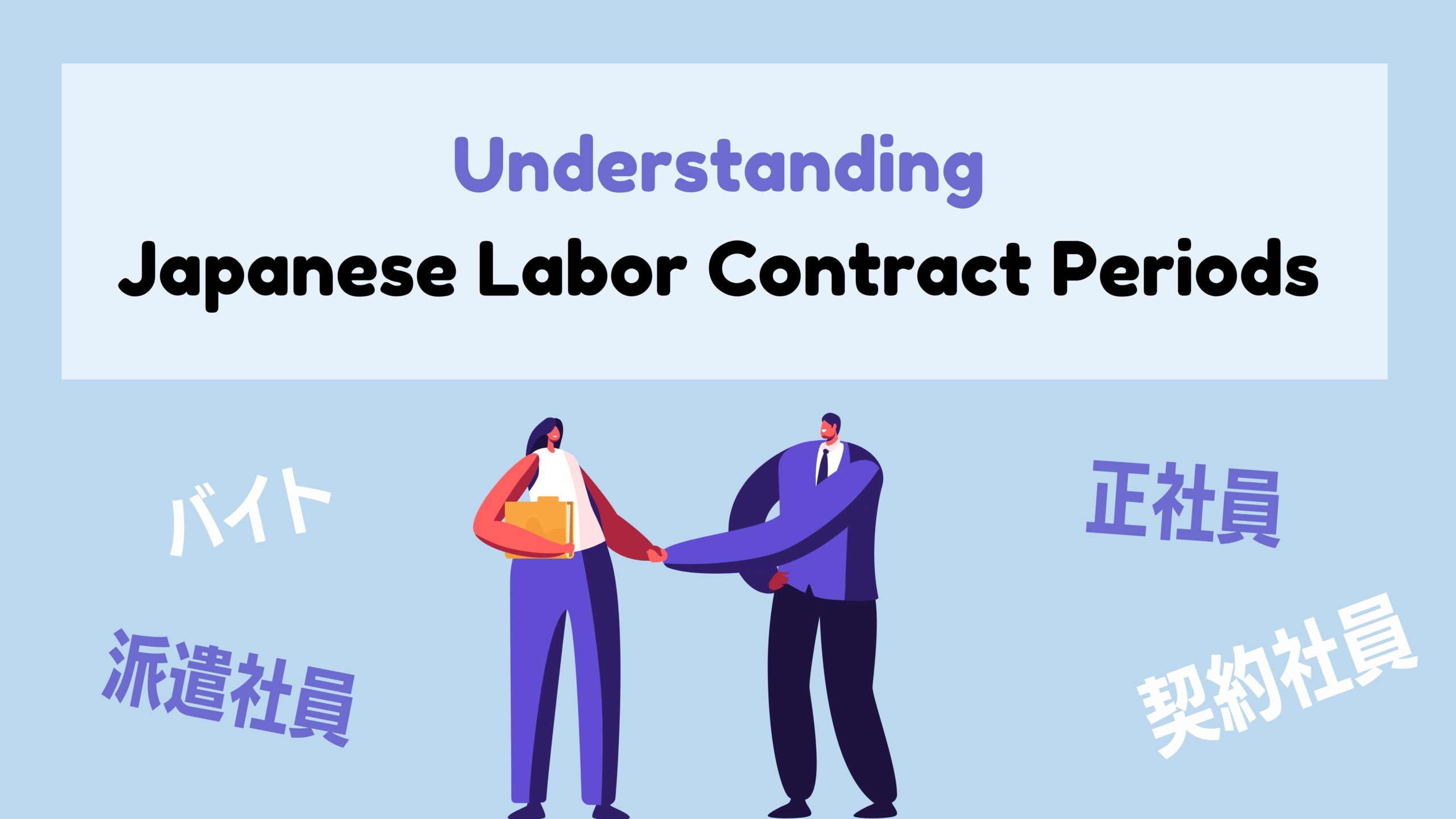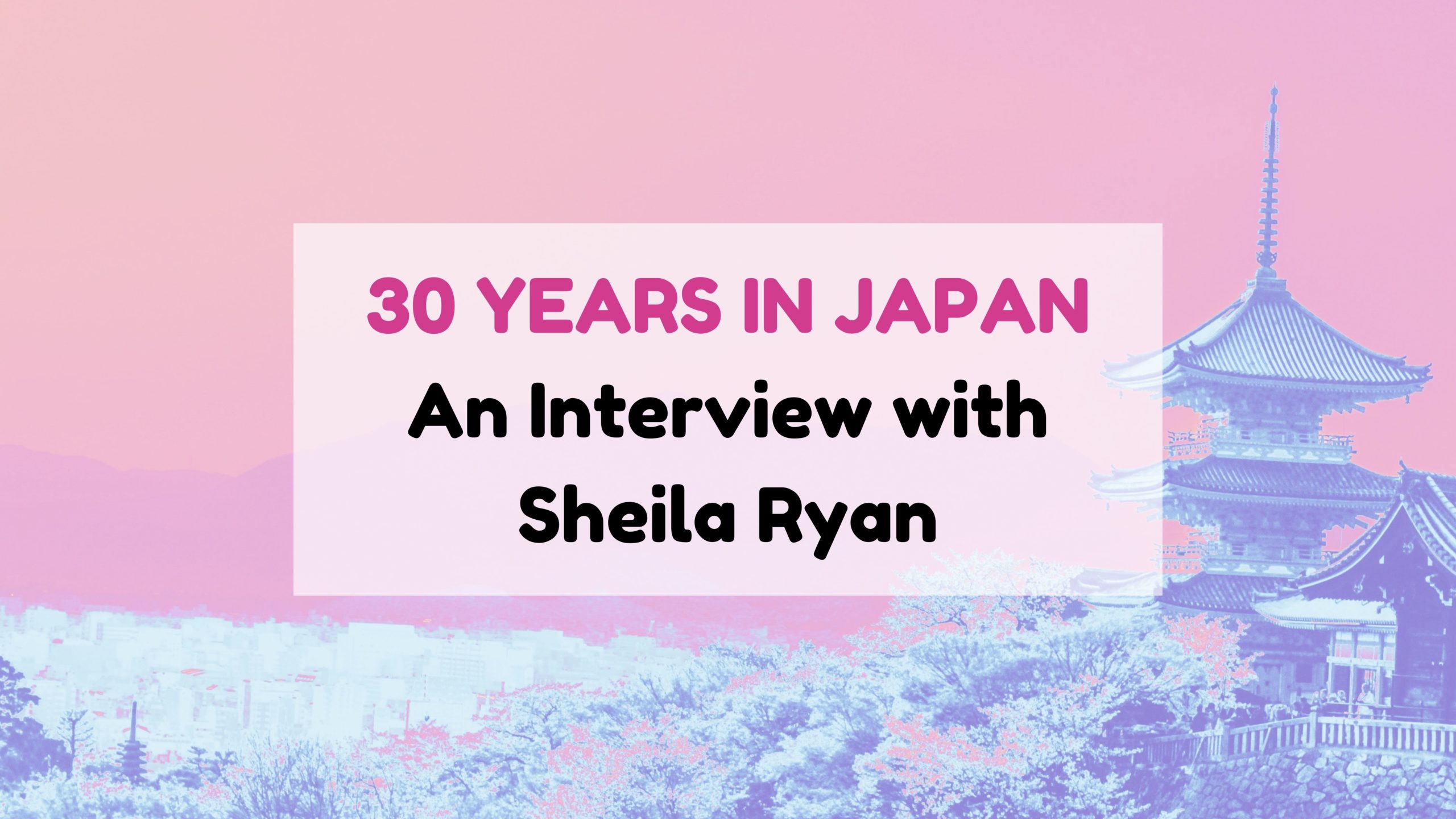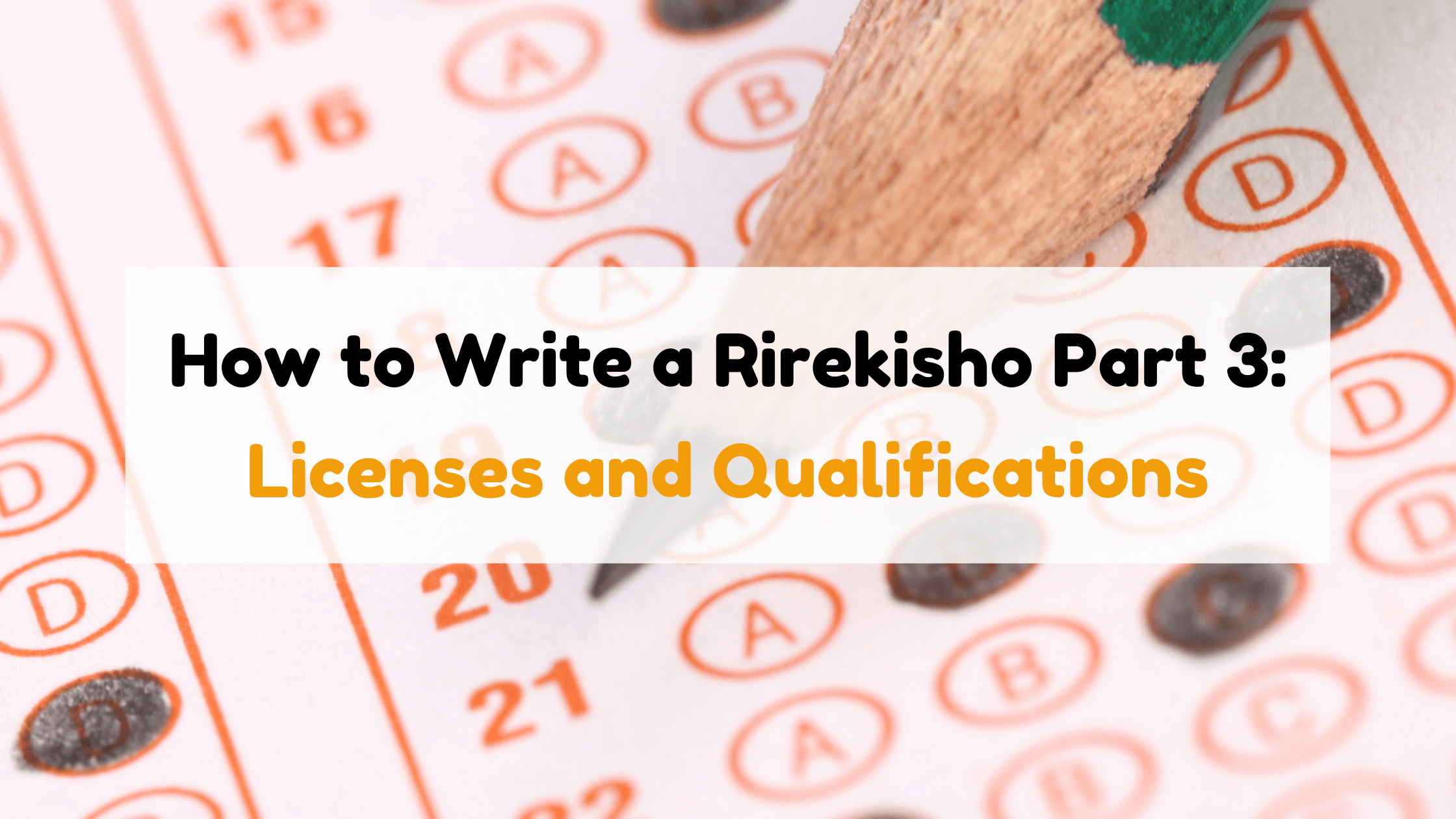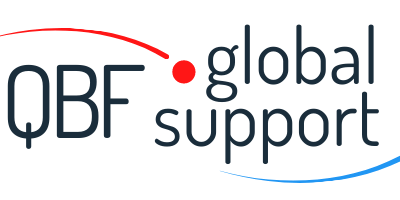When looking for a job in Japan, Japanese companies usually ask you to submit not one, but two resumes. –
a rirekisho, and a shokumukeirekisho.
So what are the features of these two kinds of resumes, and how are they different from one another?
What is a Rirekisho?
The rirekisho is the first Japanese resume to have been introduced in Japan, and is considered essential when applying for any job.
Made up of six sections, two pages in length, the rirekisho is designed to give potential employers a brief overview of who you are.
Table of Contents
履歴書
What are the main features of the Rirekisho?
The Rirekisho has a fixed template
A template was introduced in 1954 in order to regulate the information applicants submit to companies. Templates can be bought at stores across Japan, to be filled out by hand.
These days, digital rirekisho are also available to be downloaded online, allowing applicants to type their answers.
We recommend using the template designed by the Japanese government, available to download here on their website.
Slight differences exist between templates, depending on the maker. Some companies even have their own versions. In general, however, there is not too much difference between them.
Was traditionally written by hand, but the number of digital rirekisho is growing
Just like the western resume, before there were computers, people wrote their resumes by hand, on blank paper.
However, in Japan, where traditions tend to die hard, many applicants still write their rirekisho by hand. This is also due to the fact that Japanese companies originally used handwriting as one determining factor in the candidate evaluation process. Some companies continue to do so, but it is not clear to what extent.
Therefore, these days, you will see a mixture of opinions on this from both applicants and companies. Overall, it is becoming more and more normal and acceptable to fill in the rirekisho digitally.
There isn’t a lot of space to work with
Because the rirekisho is a two-page template, there is limited space for each section. For this reason, many people elaborate on their answers on the shokumukeirekisho instead, or filter their answers depending on the job they’re applying for.
There are specific formatting rules
For example, the date can be in either Western or Japanese formatting, and this should be consistent throughout the resume.
Another example is that you should finish a section by writing the word 以上 (meaning “end”). There are many other rules like this which we will cover more extensively in a future blog post.
Every Field Should be filled in
Leaving any fields blank on the rirekisho can risk an application getting discarded, and at the least it will leave a bad impression on most Japanese recruiters.
Even if you have nothing to say (such as if you lacked any licenses or qualifications), you would still need to write a line to say so, such as 特になし (nothing to mention).
The 5 Sections of the Rirekisho
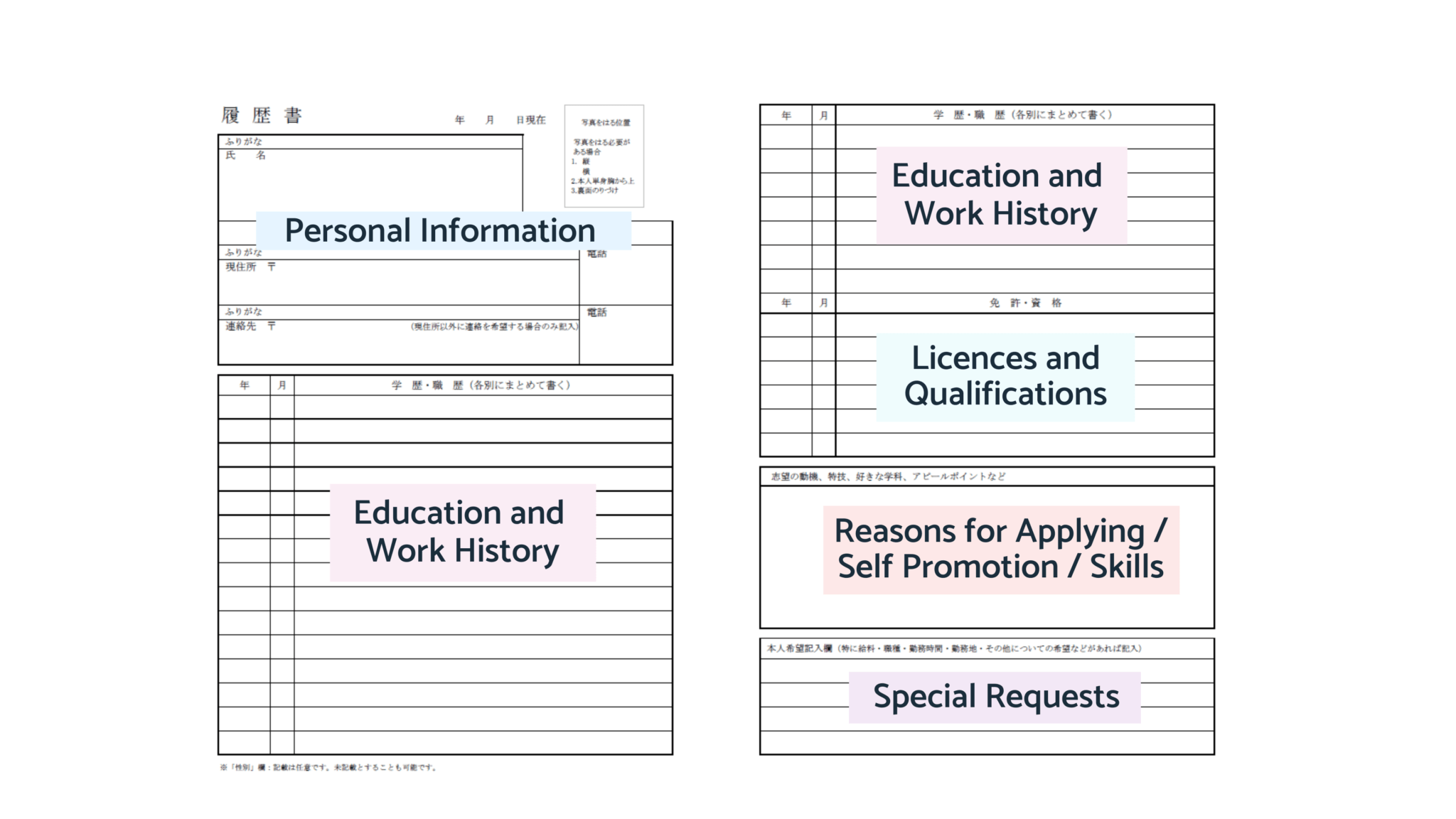
1. Personal Information
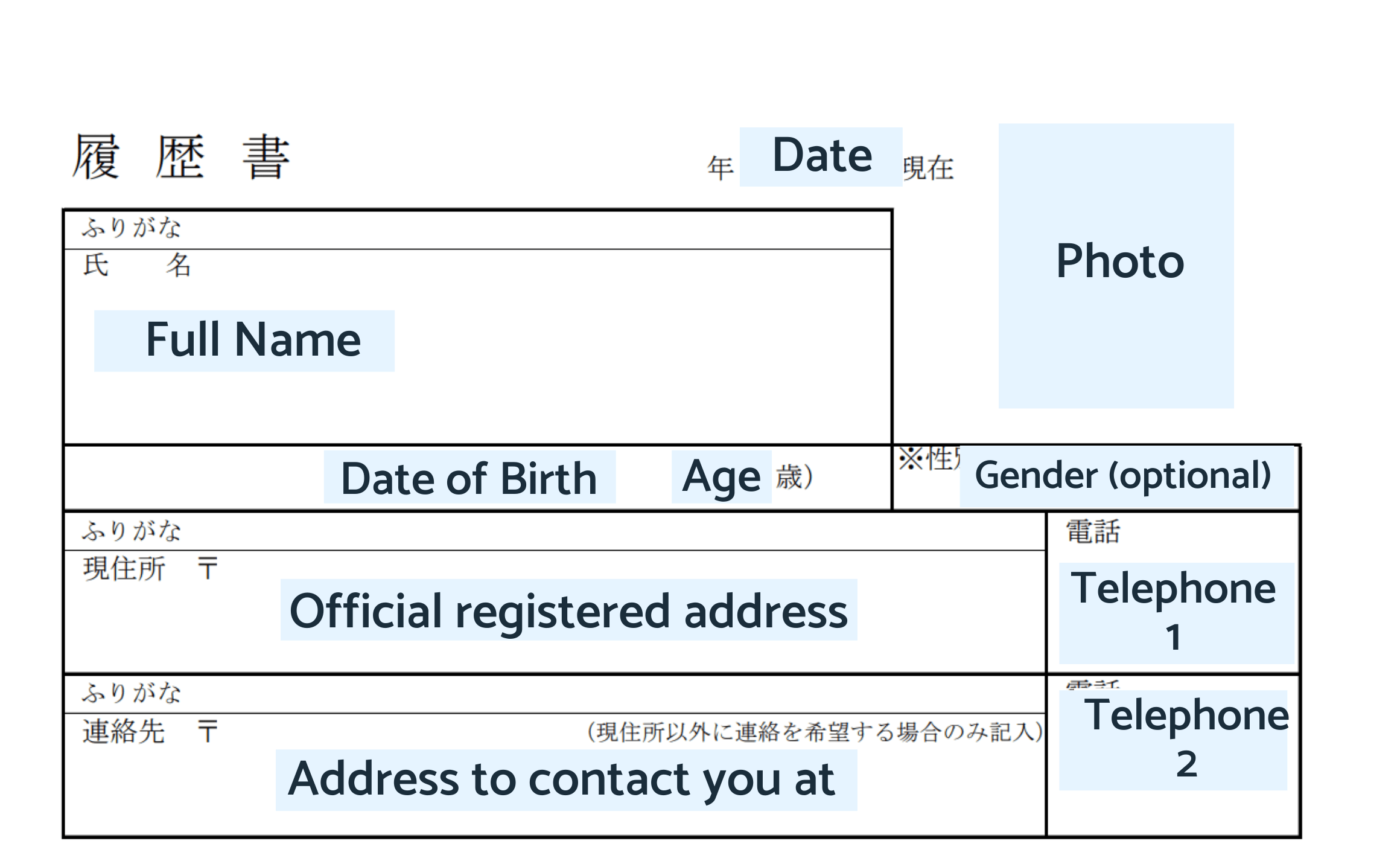
This field requires you to fill out your name, date of birth and age, address, telephone number/s and email address.
There is also a box where applicants should paste a professional photo of themselves, taken face forward, from the shoulders up.
While the field to mark gender was made optional, templates without the asterisk and footnote indicating this may still be in circulation.
2. 学歴・職歴 Education and Work History
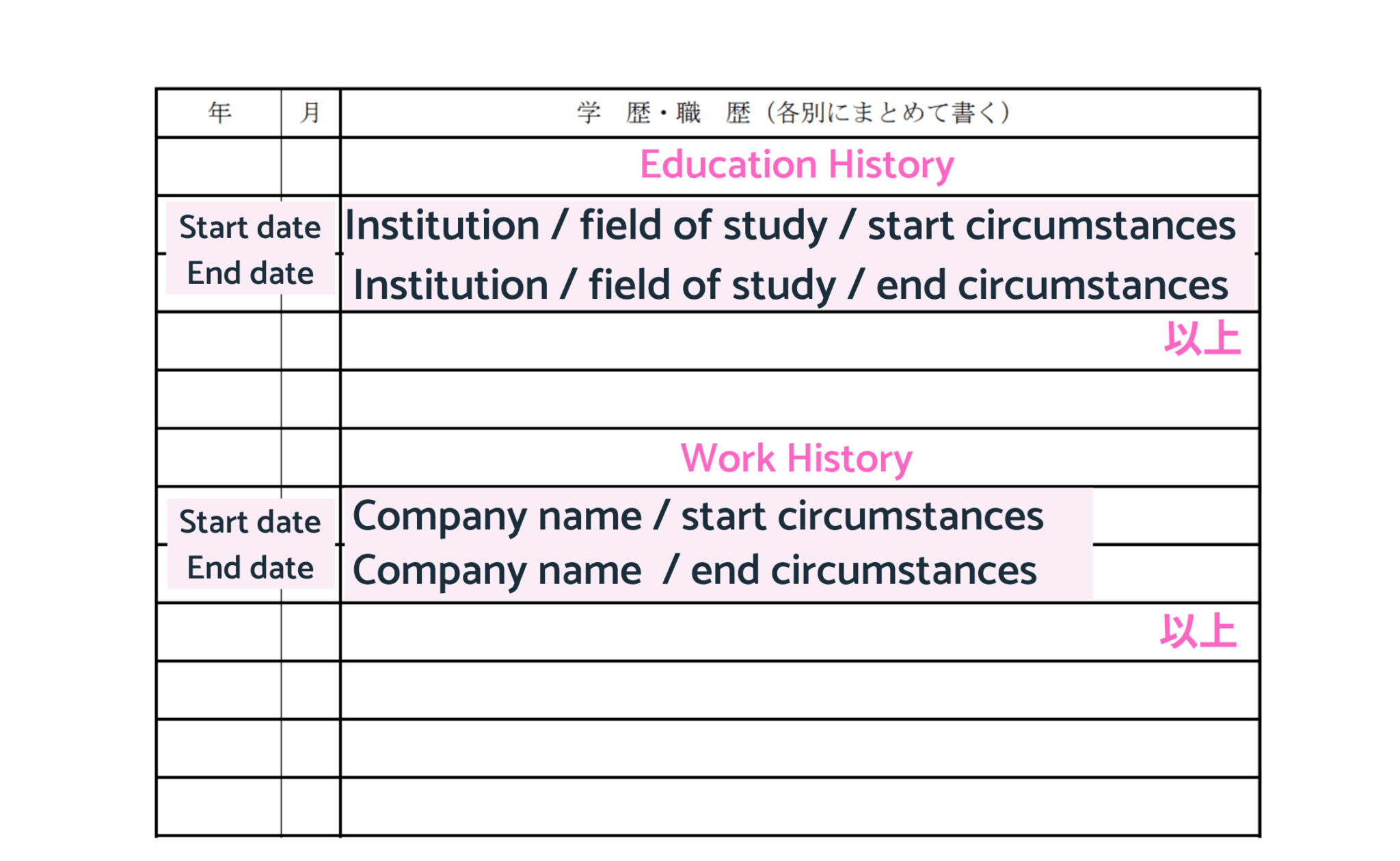
Here applicants should list any educational institutions they have attended, (including the course name and type) and any companies they have worked at. These should be listed in reverse chronological order, including start and finish dates.
For each company / institution, you must state how and why the relationship with the institution or company started and ended (e.g., graduated, contract ended, etc.)
Unlike western resume formatting, the name of the institution / workplace needs to be written twice, over two lines – one line for start date information and one line for end date information.
3. 免許・資格 Licenses and Qualifications
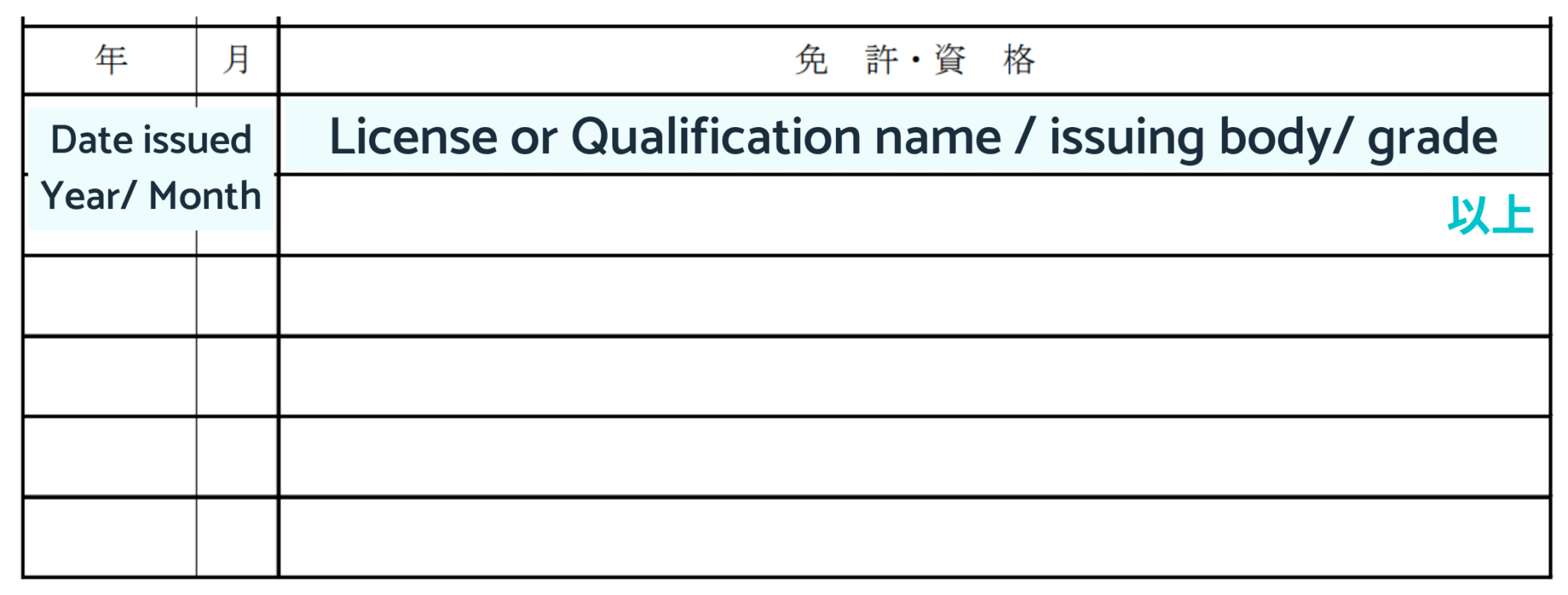
In this section, applicants can list any official licenses or qualifications they have, and the dates these were acquired. These include things like driving licenses, language certificates (JLPT, TOEIC etc.), teaching licenses, IT qualifications, etc. The list should be relevant to the kind of job being applied to. As a rule, whatever the job, most people put their driver’s license at the top, if they have one.
4. 自己PR・スキル Self-promotion and Skills
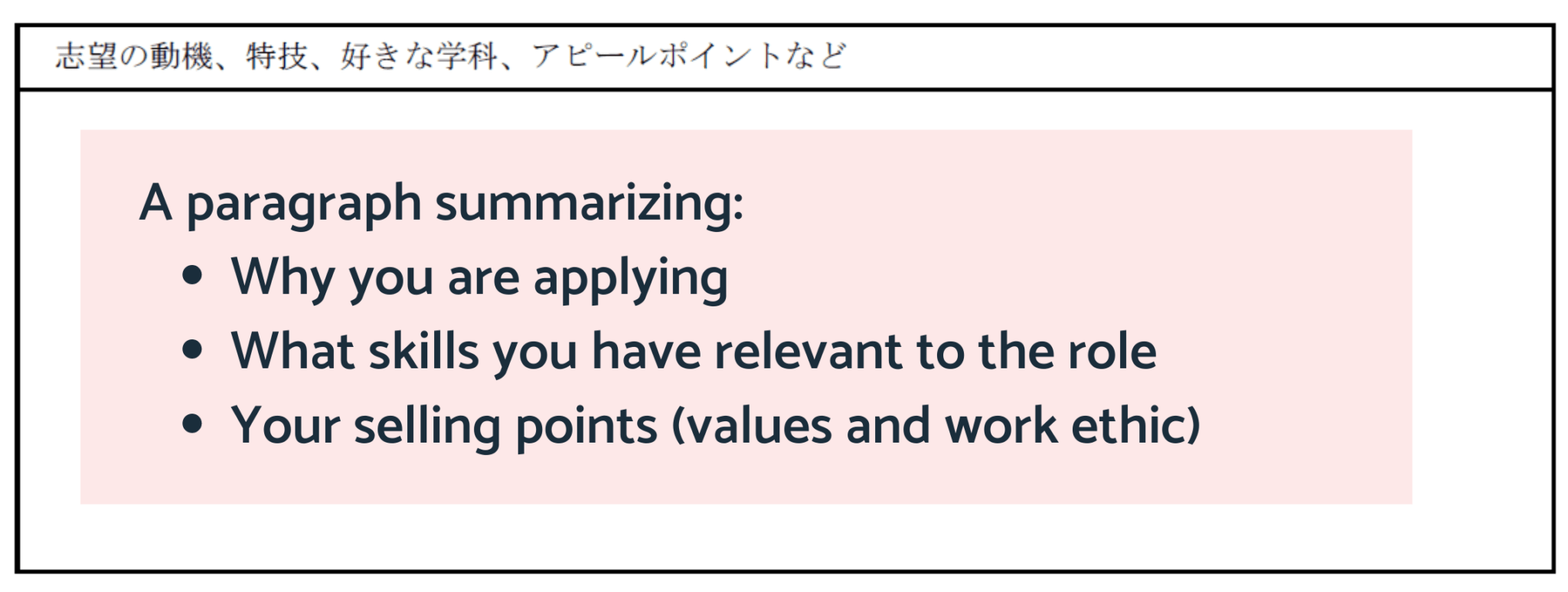
This section is for explaining why you want to apply for the job in question. It is also where you can talk about what you have done at your current / previous jobs, and how the skills you have acquired so far relate to the role you are applying for.
Because of space limitations, many people move this section to the shokumukeirekisho.
5. 本人希望 Personal Requests

In this section, applicants can mention any special requests they might have in terms of working conditions or benefits. It might also be a good place to let the company know important information that may affect the application and hiring process.
For foreigners, this could be a good place to let the company know if you require visa support. Or, for parents, a place to request specific start and finish times so that they can pick up children after school, for example
What is a Shokumukeirekisho?
The shokumukeirekisho is the second type of resume you should submit with your Japanese job application. Shokumu translates to mean “work duties”, and is where applicants can showcase their work experiences.
Because you can use your own words, you can also write more persuasively to appeal to recruiters as to why they should hire you. For westerners, it might be useful to think about the shokumukeirekisho as a combination of a cover letter and a western resume.
職務経歴書
What are the main features of the Shokumukeirekisho?
There is no specific format like the rirekisho
Unlike the rirekisho, which has a standardized template, the shokumukeirekisho is something which you create yourself from scratch on an application like Microsoft Word. It is similar to the western resume format, in that, although there isn’t a template, most people have a rough idea of what subheadings and structuring will work best.
Recommended Headings for the Shokumukeirekisho
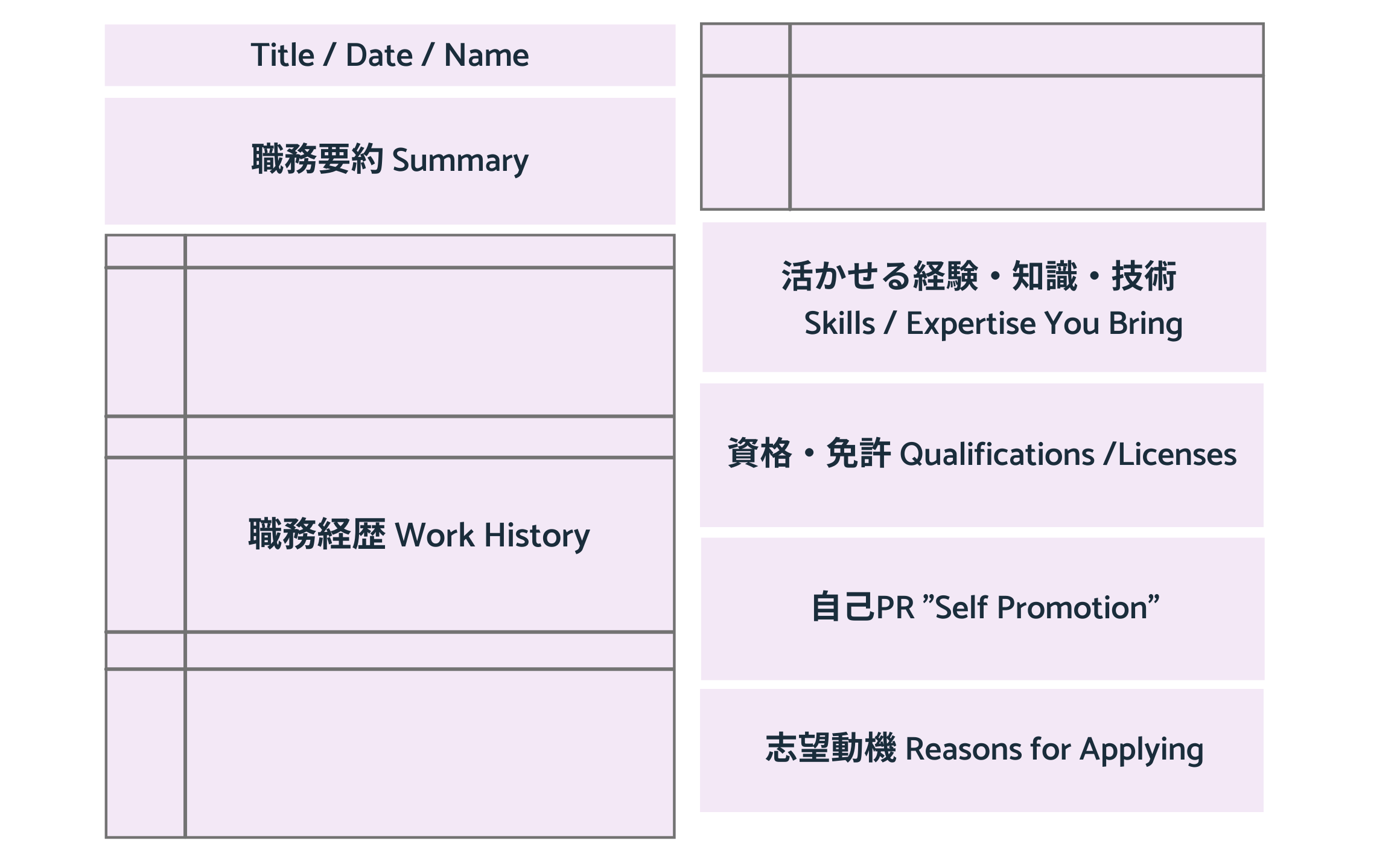
タイトル・氏名・日付 Heading (Title / Date / Name)
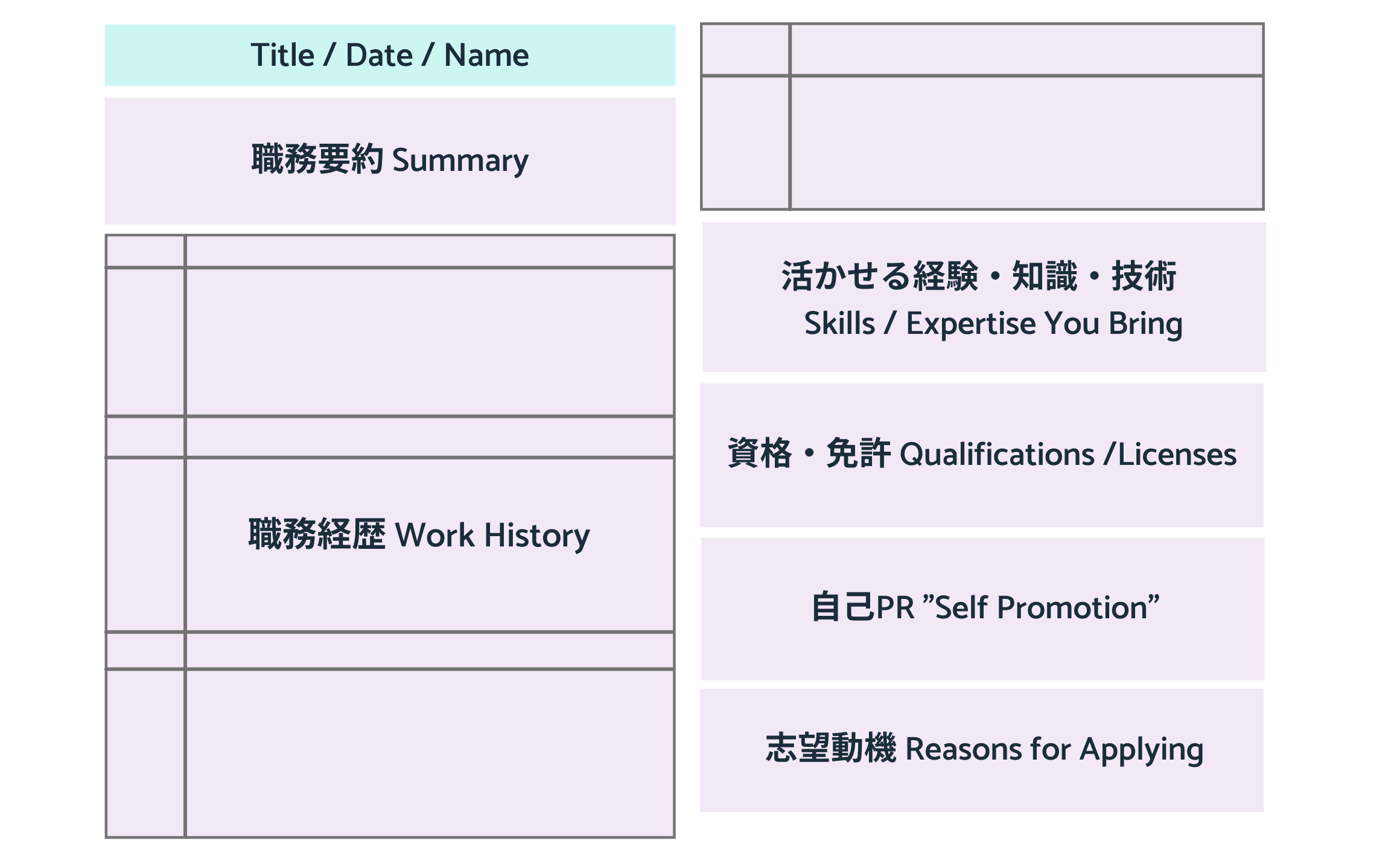
Just like an English resume, you should format the top of your shokumukeirekisho with a title (職務経歴書), as well as your name and the date.
職務要約 Summary

Much like a western resume, this is a short paragraph of text that you might choose to put at the very top, summarizing who you are professionally, and what you hope to do going forward. It helps to give recruiters a snapshot of an applicant, and it may be a deciding factor in whether or not they continue reading.
職務経歴 Work History
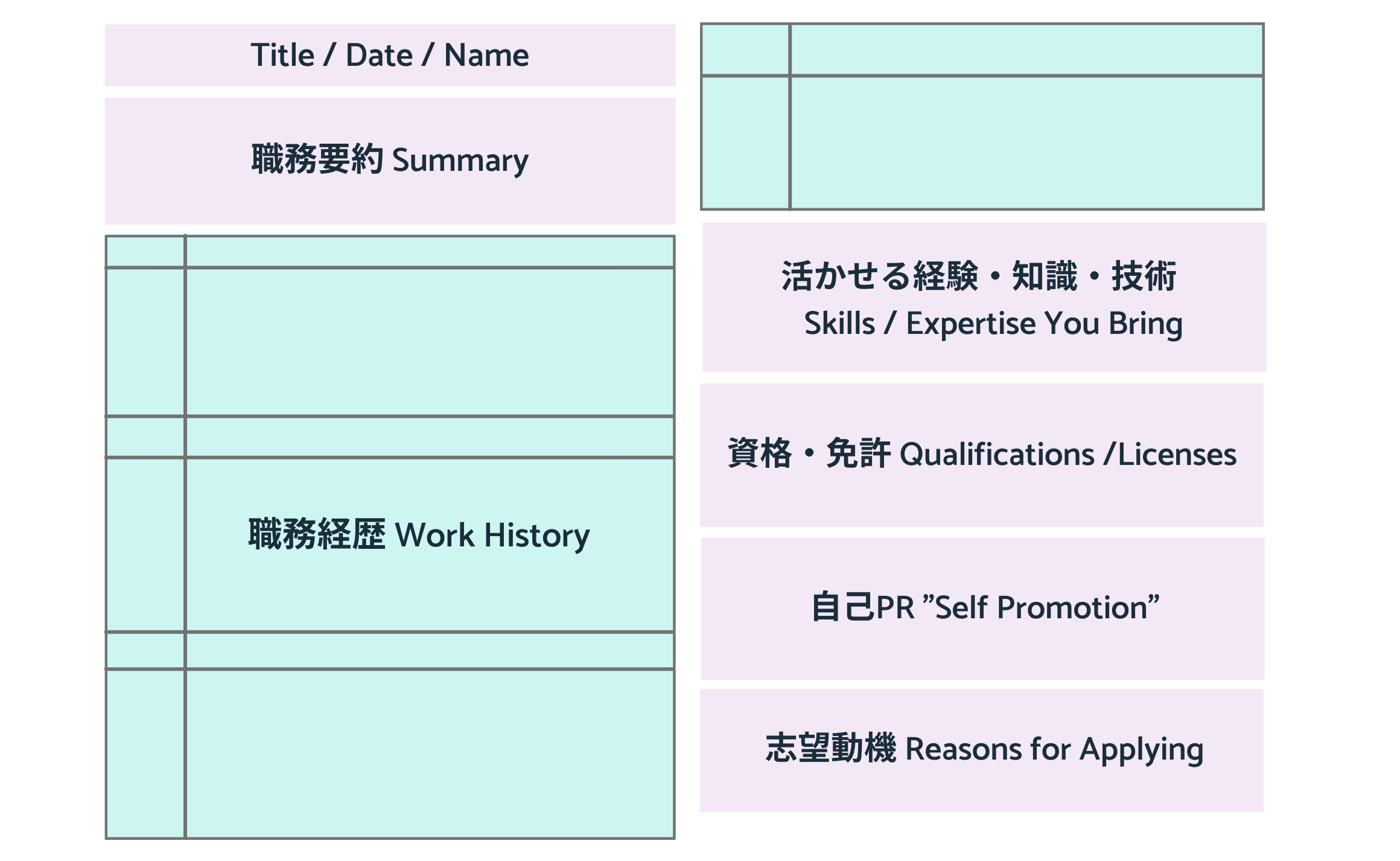
We have already listed our work history in brief on the rirekisho. This is where you can go into more details, writing in full sentences about your duties and experiences at each company.
While not necessary, many people choose to format this section with a table, which helps to differentiate it from other headings. In the heading for each job, it is also common practice to include statistics for the total number of employees for each company, as well as the company’s capital worth, which may feel unfamiliar to foreigners.
活かせる経験・知識・技術 Skills / Expertise You Bring

You might see this section titled with any combination of other words, such as:
スキル (skills)
PRポイント. (Greatest achievements)
PCスキル (PC skills)
テクニカルスキル (Technical Skills)
Essentially, this is where applicants can elaborate on skills, expertise and special experiences they might be able to bring to the role. It will largely depend on what type of job you are applying to and how you choose to structure and format this area. For example, someone who is an engineer and knows a lot of coding languages might choose to break their IT skills into a separate heading altogether. Someone applying to be a translator might create a special section to list translation achievements, with entries like, “Translated three best-selling novels”. It really depends on your unique work history and field.
資格・免許 Qualifications and Licences
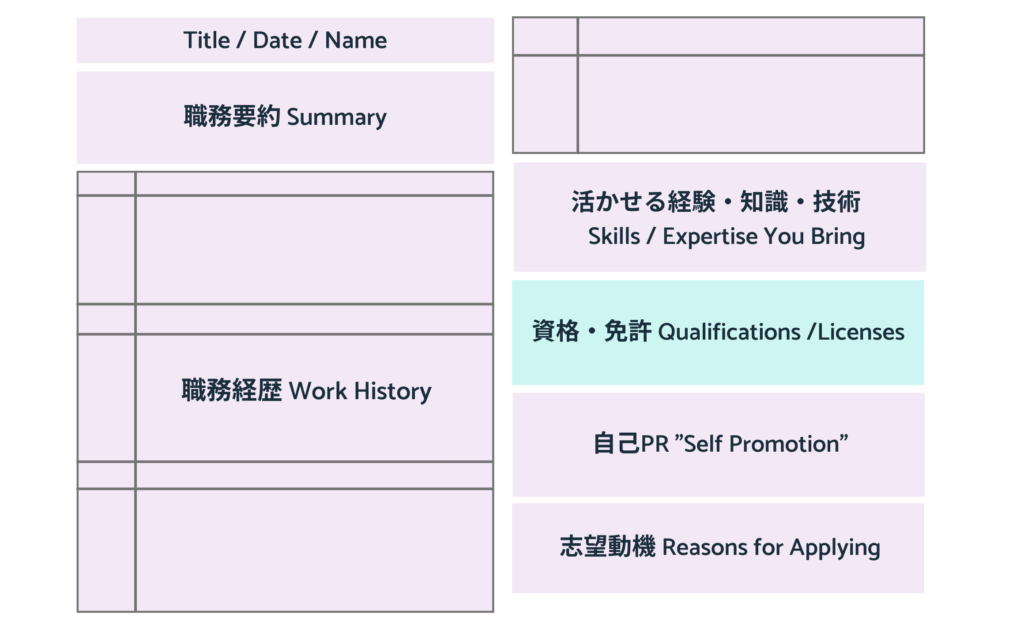
You may notice that this field also appears on the rirekisho. Many people choose to put this information again on their shokumukeirekisho, following the same formatting as the rirekisho – the date the qualification / license was obtained, the name of the certificate / issuing institution and the result if applicable.
自己PR "Self Promotion"
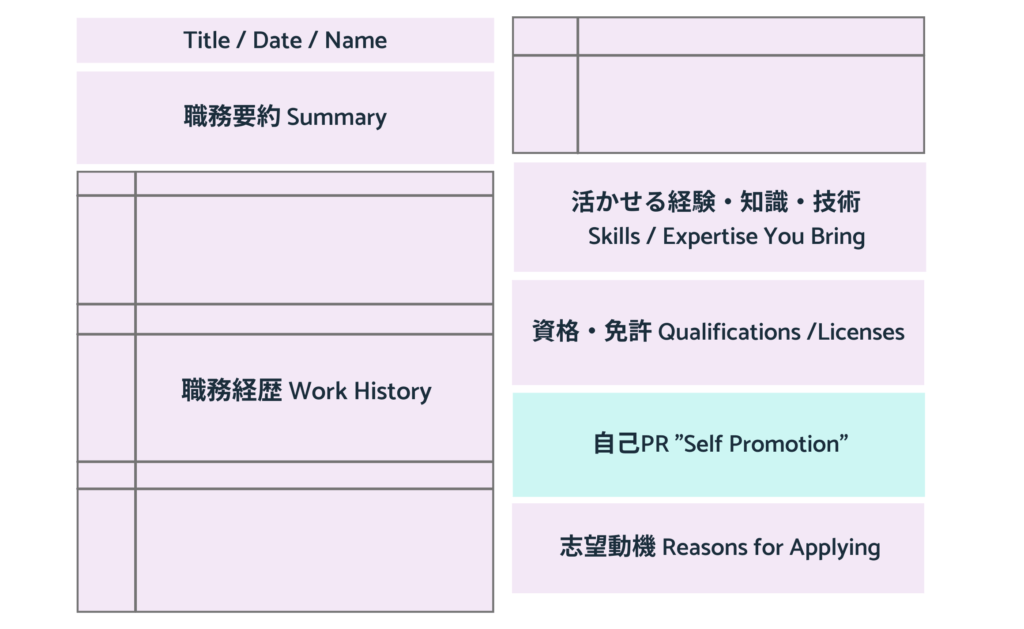
This should be a paragraph, where you have the opportunity to use more emotive language to sell yourself to recruiters. It is where you can give reasons as to why the company should hire you over other applicants, and what you would bring to the company.
志望動機 Reason/s for Applying
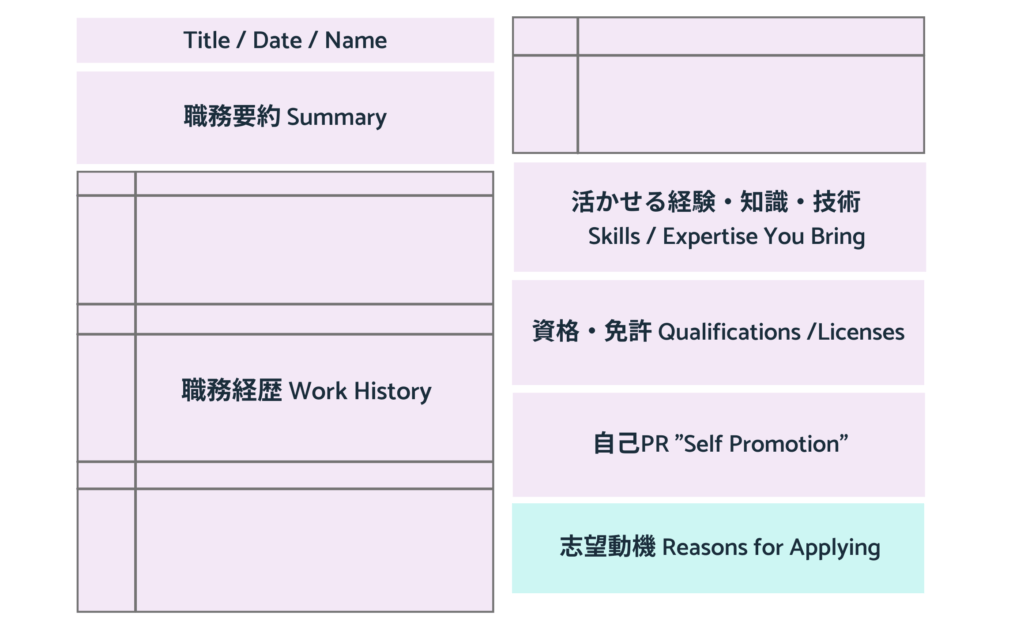
In this final section, you can write a short paragraph to tell recruiters why you want to work at their company. Some people choose to group this heading with the “Self Promotion” heading, or omit it altogether, but it’s a good idea to include it.
This heading also appears on the rirekisho, but the free formatting of the shokumukeirekisho allows you to go into a bit more detail.
Side-by-Side Comparison of the 2 Resumes
Rirekisho
Shokumukeirekisho
Useful for:
・Giving companies a “snapshot” of the applicant
・Checking applicant’s handwriting and organization skills (do they follow the formatting rules correctly?)
・Revealing personal information about the applicant such as facial profile and age (controversial for fostering unconscious bias)
Layout features:
・Applicants must include a picture
・Predetermined template 2 pages in length
・Predetermined format – 6 fields and prompt questions
・Prompts ask for mostly physical / factual attributes to be presented in a timeline fashion
・Not much space to go into detail
Headings (required):
1. Personal Information
2. 学歴・職歴 Education and work history
3. 資 格・免許 Licences and qualifications
4. 志望の動機・特技・趣味・アピールポイントなど Reasons for Applying / Self-promotion and Skills
5. 本人希望記 Personal Requests
Useful for:
・Giving more detailed information about past and present roles
・Going into detail on matters not able to cover in the rirekisho
・Showcasing longer careers (useful if you are in the middle of your career) where more space may be needed
・Giving the applicant a chance to sell themselves in their own words
Layout features:
・Usually made by the applicant from scratch on Word, etc.
・Can be as many pages as necessary (although 3-4 pages at most is the recommended)
・Suggested field names exist for each section but format is flexible
・Applicants can elaborate on details of experiences in their own words
Headings (guideline):
2. タイトル・氏名・日付 Heading (Title / Date / Name)
2. 職務要約 Summary
3. 職務経歴 Work History
4. 活かせる経験・知識・技術 Skills / Expertise
5. 資格・免許 Qualifications and Licenses
6. 自己PR “Self Promotion”
7. 志望動機 Reason/s for Applying
Conclusion
In Japan, a resume is sometimes referred to as a “love letter” to the company.
While this might sound funny, there is no denying that whatever country you are from, a resume is usually where you make your first impression on a potential employer.
Therefore, it’s important that you craft both the rirekisho and the shokumukeirekisho to give a good impression. This means following cultural rules and formatting as much as possible.
However, if Japanese is not your first language, don’t be too hard on yourself.
A good recruiter will be able to see when candidates are trying their best, so don’t worry about being absolutely “perfect”!
Remember that, what’s more important are the skills that you bring to the company, and your ability to communicate in a positive way.
Learn more about our free job seeking support for foreigners living in Kyushu and Japan
